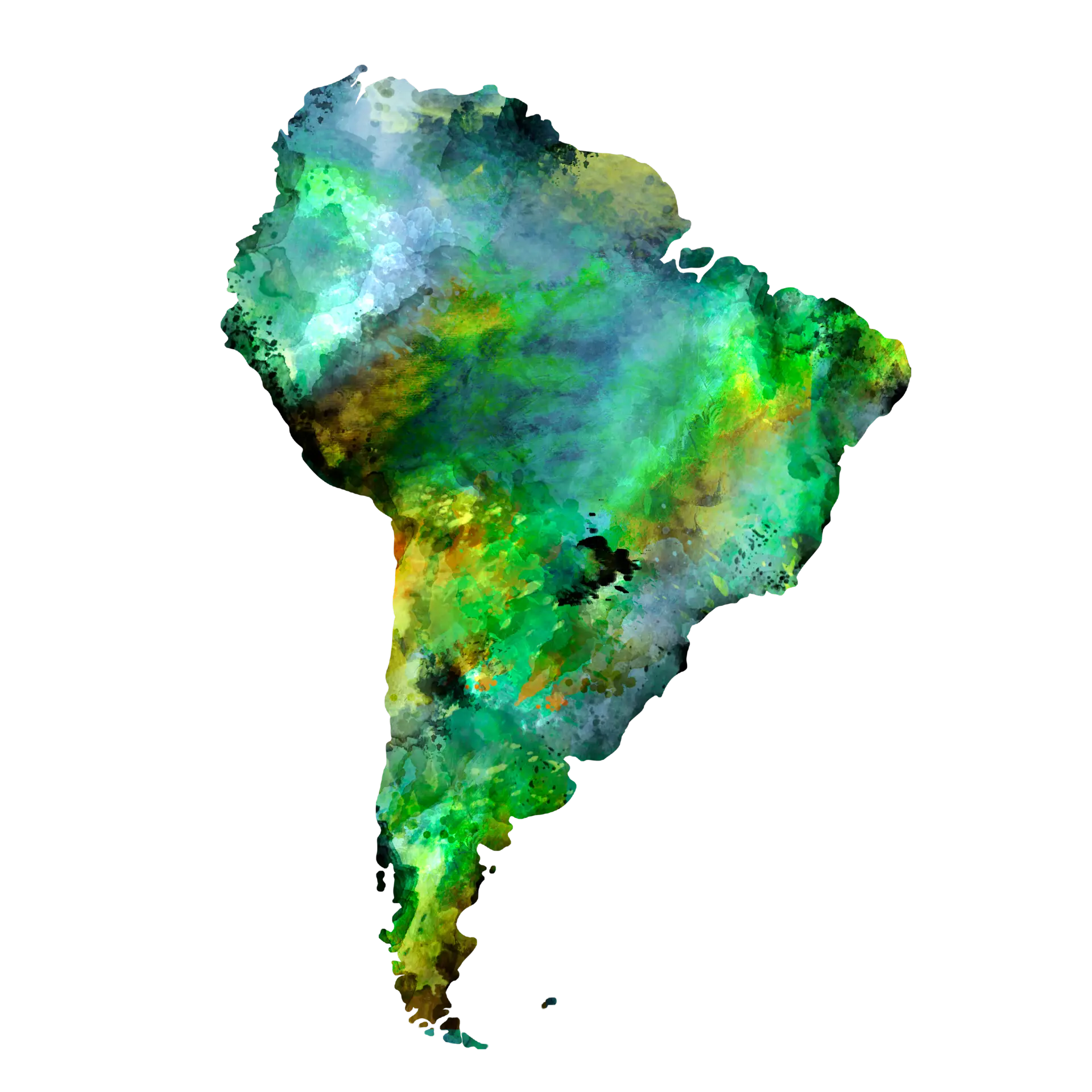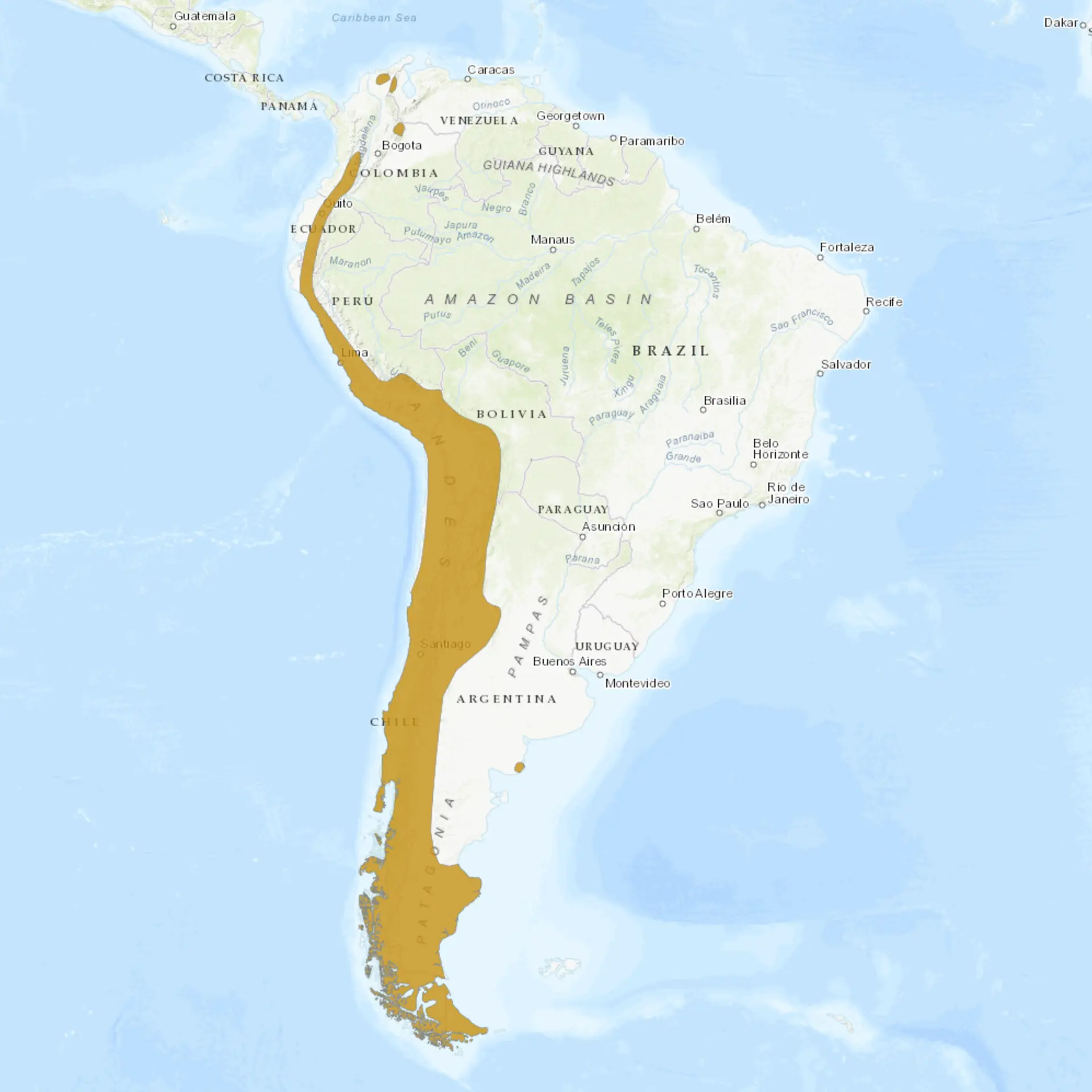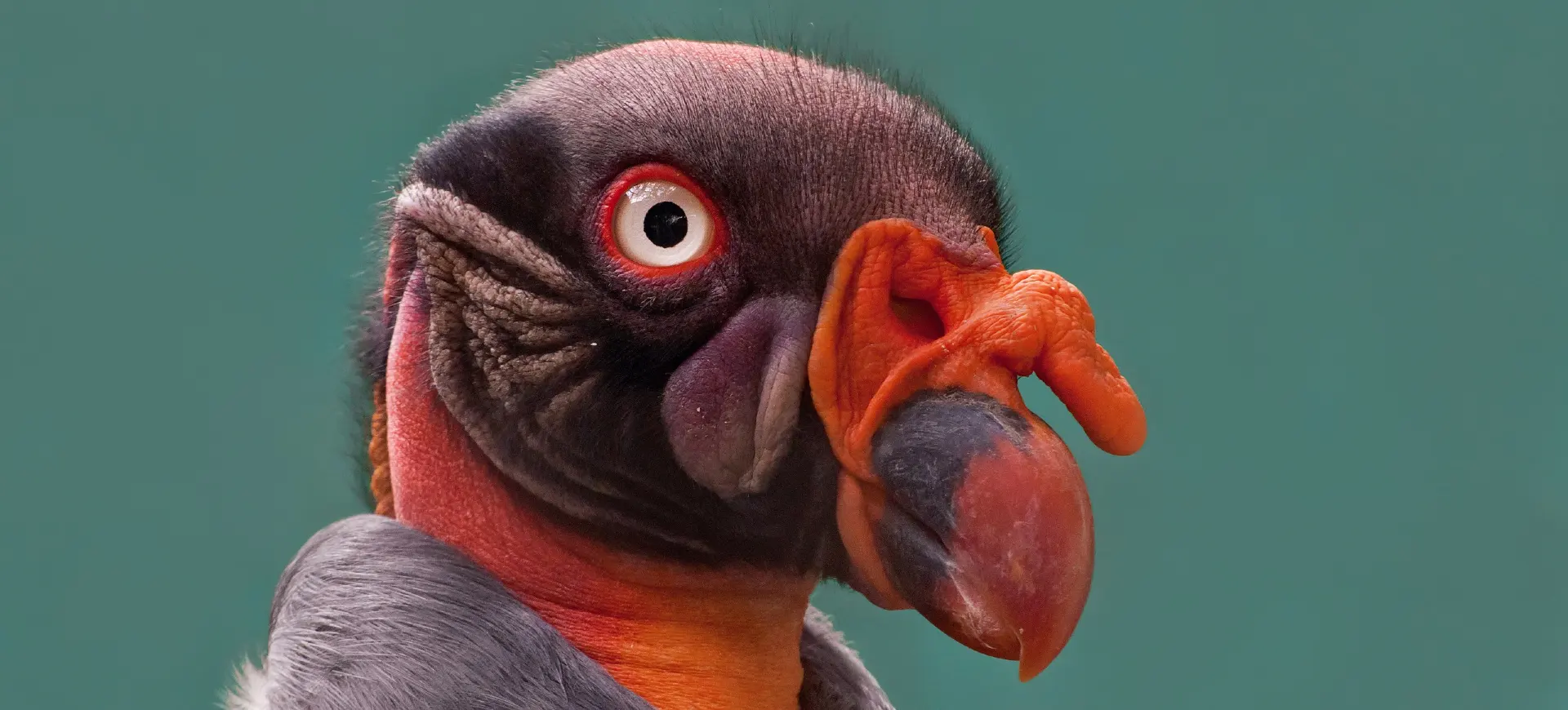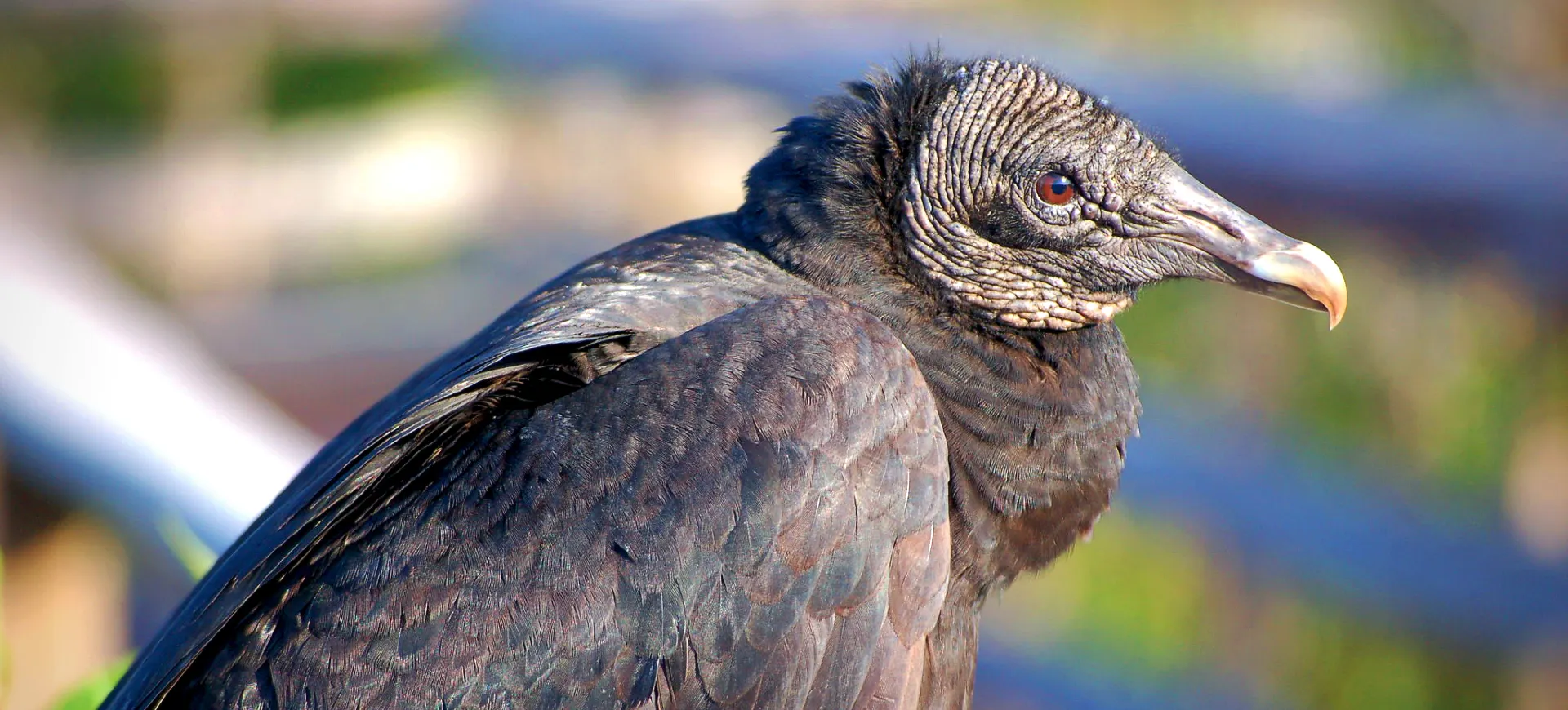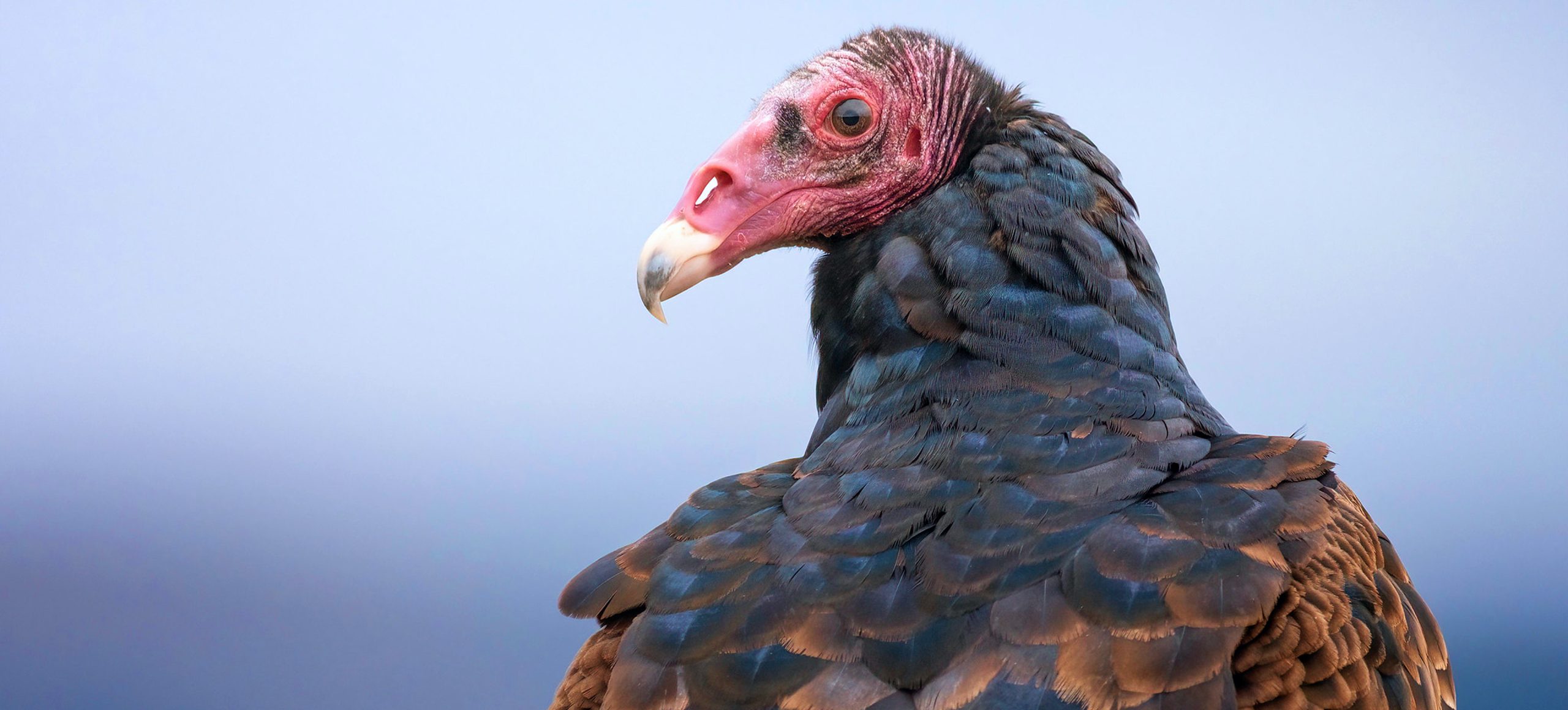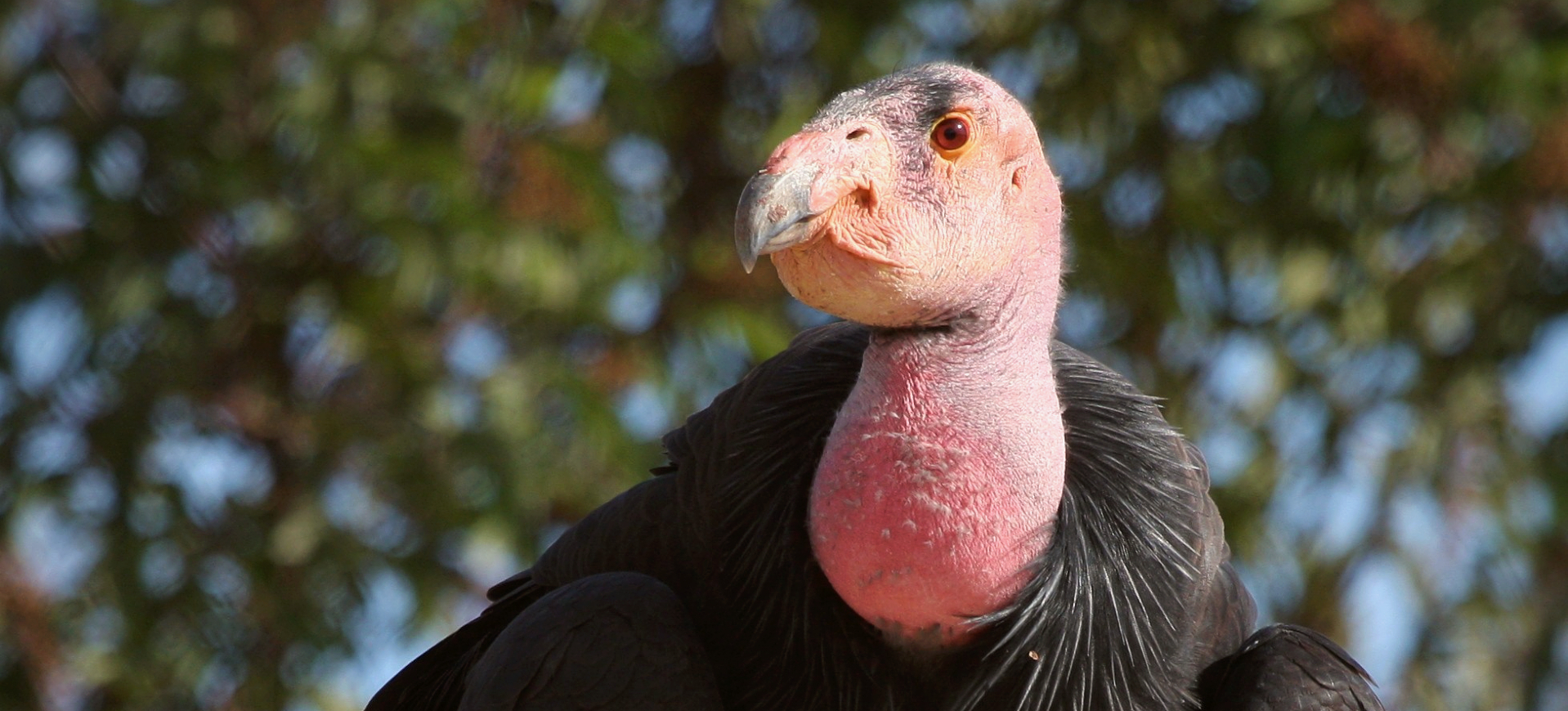Overview
The Andean condor (Vultur gryphus) is the largest flying bird in the world by wingspan among land birds, known for its striking appearance and impressive soaring capabilities. This iconic bird is native to the Andes Mountains and adjacent coasts of South America, where it thrives in open grasslands, mountainous regions, and coastal cliffs. With a wingspan of up to 10.5 feet (3.2 meters), the Andean condor can soar effortlessly on thermal air currents for hours without flapping its wings. As a scavenger, it plays a crucial ecological role by feeding on carcasses, helping to recycle nutrients and preventing the spread of disease.
The Andean condor is culturally significant in many South American countries and symbolizes power, health, and freedom. Despite its importance, its populations have declined due to habitat loss, poisoning, and hunting, particularly in areas where it is wrongly blamed for livestock predation. The International Union for Conservation of Nature (IUCN) classifies the bird as vulnerable, and its numbers are declining in many parts of its range. Conservation efforts, including captive breeding programs and reintroduction initiatives, aim to restore populations and protect their habitats.
These condors are long-lived birds, with lifespans reaching up to 50 years in the wild and even longer in captivity. They are highly social, often seen in groups around carcasses, where a strict dominance hierarchy determines feeding order. Their remarkable ability to cover vast distances in search of food makes them a key species for understanding ecosystem health across large landscapes. The Andean condor is a flagship species for conservation, drawing attention to the broader ecological challenges facing the Andes region.
Taxonomy
Kingdom
Phylum
Class
Order
Family
Genus
Species
Type
Current distribution:
The Andean condor is found along the Andes Mountains from Venezuela and Colombia in the north to southern Chile and Argentina in the south. Populations are most robust in regions with large protected areas, such as Patagonia in southern Argentina and Chile and the high-altitude Andean plains of Peru and Bolivia. In contrast, northern populations in Colombia and Venezuela have seen severe declines due to habitat loss, hunting, and poisoning. Small, fragmented populations remain in these areas, and reintroduction programs are underway to bolster their numbers.
In Chile and Peru's coastal regions, Andean condors are often observed feeding on marine mammal carcasses washed ashore, highlighting their adaptability to different environments. Protected areas, including national parks and reserves, are critical strongholds for the species. Conservationists are also working to connect fragmented populations through habitat corridors and reintroduction programs. Despite these efforts, the species remains vulnerable to threats, and continued monitoring and protection are necessary for its long-term survival.
Physical Description:
The Andean Condor is a striking bird with predominantly black plumage, contrasted by white patches on the wings and a white ruff of feathers around the neck. Adult males have a caruncle, or fleshy crest, on their heads, which is absent in females. The bird’s beak is hooked, allowing it to tear flesh easily, and its feet are more adapted for walking than grasping, as it feeds primarily on carrion.
The species is sexually dimorphic, with males generally being larger than females. Adult males can weigh up to 33 pounds, while females are slightly smaller, weighing up to 24 pounds. The Andean Condor’s wingspan is one of the largest of any bird, ranging from 9 to 10.5 feet, which allows it to soar effortlessly on thermal currents.

Lifespan: Wild: ~50 Years || Captivity: ~70 Years

Weight: Male: 26–33 lbs (12–15 kg) || Female: 17–24 lbs (8–11 kg)

Length: Male: 43–53 in (109–135 cm) || Female: 40–50 in (102–127 cm)

Wingspan: Male & Female: 9–10.5 ft (274–320 cm)

Top Speed: 35 mph (56 km/h)
Characteristic:
Native Habitat:
The Andean condor is native to the Andes Mountains and adjacent regions. It inhabits many ecosystems, including montane grasslands, open savannas, and coastal cliffs. These birds prefer open landscapes where they can easily locate food and take advantage of strong thermal air currents for efficient soaring. Roosting sites are often located on high cliffs or rocky outcrops, which provide safety from predators and allow for easy takeoff. They are also commonly found near carcass-rich areas, such as grazing lands or coastal zones where marine mammals occasionally wash ashore.
Their habitat ranges from low-lying coastal areas to elevations exceeding 16,000 feet (4,880 meters) in the Andes Mountains. They require large home ranges, often encompassing hundreds of square miles, to meet their scavenging needs. Habitat loss, particularly due to agriculture, logging, and urban development, has significantly reduced the availability of suitable roosting and foraging areas. Conservation efforts aim to protect large tracts of habitat and establish corridors to maintain healthy populations across their range.
Biomes:
Biogeographical Realms:
Continents:
Diet:
Diet & Feeding Habits:
The Andean condor is an obligate scavenger, feeding exclusively on carrion, such as the remains of livestock, deer, and other large animals. They often rely on their excellent vision and the presence of smaller scavengers like vultures and caracaras to locate carcasses. Their strong, hooked beaks are adapted for tearing into the tough skin of large animals, allowing them to access meat and organs that smaller scavengers cannot. They can consume large quantities of food in one sitting, often up to 15% of their body weight, to sustain themselves during periods of scarcity.
These birds are known to roost in high-altitude areas and travel vast distances, sometimes up to 120 miles (200 km) in a single day, in search of food. Andean condors are selective feeders, preferring fresh carcasses and consuming older remains if necessary. Their role as scavengers helps prevent the spread of disease by cleaning up decomposing animal matter in the environment. By feeding primarily on dead animals, they maintain the balance of ecosystems and reduce competition for live prey among other predators.
Mating Behavior:
Mating Description:
The Andean Condor is monogamous, forming long-term pair bonds. The species has a low reproductive rate, with females laying only one egg every two years. Both parents incubate the egg for about 54 to 58 days. After hatching, the chick is cared for by both parents and may take up to six months to fledge.
The young condor remains dependent on its parents for food and protection for several months after fledging. It reaches sexual maturity at about six years of age. Due to the low reproductive rate and long period of parental care, the Andean Condor is particularly vulnerable to environmental and anthropogenic threats, which can significantly impact its population.
Reproduction Season:
Birth Type:
Pregnancy Duration:
Female Name:
Male Name:
Baby Name:
Social Structure Description:
Andean condors are highly social birds. They are often seen in groups around carcasses and at communal roosting sites. These groups are organized by a dominant hierarchy, with older and larger individuals, typically males, feeding first. Social interactions, such as neck-flushing displays and vocalizations, help establish and reinforce these hierarchies. Communal roosting sites, often on high cliffs, provide safety and allow individuals to conserve energy by sharing thermals for efficient takeoff.
Pair bonds between mated individuals are long-lasting, and pairs are often seen roosting or flying together. Juvenile condors remain with their parents for extended periods, learning essential survival skills before becoming independent. Outside of feeding and roosting sites, condors are more solitary, and individuals often travel vast distances searching for food. This social and solitary behavior combination reflects their unique ecological role and life history strategy.
Groups:
Conservation Status:
Population Trend:
The Andean condor population has declined significantly in recent decades due to habitat destruction, hunting, and poisoning. However, some regions, such as Patagonia and parts of the Andes, maintain stable populations due to strong conservation efforts and low human disturbance. Northern populations in Colombia and Venezuela are critically low, with fewer than 100 individuals in some areas. Habitat fragmentation and human activities remain the most significant threats to their survival.
Captive breeding programs have successfully bred Andean condors and reintroduced them into the wild, bolstering some declining populations. However, their low reproductive rate—females laying a single egg every 1–2 years—limits how quickly populations recover. Monitoring efforts, including satellite tracking, provide valuable data on their movements and threats. Continued conservation initiatives are essential to address the species’ immediate and long-term challenges.
Population Threats:
Poisoning is one of the primary threats to the Andean condor, often occurring when carcasses laced with toxins are left out to kill predators like pumas or foxes. Hunting also poses a significant risk, as condors are sometimes killed out of fear or retaliation for perceived livestock predation despite their scavenging diet. Habitat loss due to agriculture, urbanization, and mining reduces the availability of suitable roosting and foraging areas, further isolating populations. Climate change may also impact the availability of thermal currents and prey, particularly in high-altitude and coastal habitats.
Lead poisoning from consuming ammunition fragments in carcasses is an emerging threat in some regions. Human disturbance near nesting and roosting sites can disrupt breeding and reduce reproductive success. The species’ low reproductive rate and slow maturation also make it particularly vulnerable to population declines. Addressing these threats requires coordinated efforts between governments, conservation organizations, and local communities.
Conservation Efforts:
Conservation initiatives for the Andean condor focus on habitat protection, public education, and reducing human-wildlife conflict. Protected areas such as national parks and reserves provide safe habitats where condors can forage, nest, and roost without human interference. Captive breeding and reintroduction programs, such as those in Colombia and Argentina, have boosted wild populations in some regions. Anti-poisoning campaigns aim to reduce the use of toxic baits and raise awareness about the condor’s ecological importance.
Monitoring programs using satellite tracking have improved understanding of condor movements, helping identify critical habitats and threats. Community engagement initiatives promote coexistence by addressing misconceptions about condors and their impact on livestock. Some programs provide economic incentives, such as eco-tourism opportunities, for local communities to protect condors and their habitats. Long-term success will depend on continued funding, international collaboration, and efforts to address habitat fragmentation and other anthropogenic threats.
Additional Resources:
Fun Facts
- The Andean condor has the largest wingspan of any land bird, reaching up to 10.5 feet (3.2 meters).
- It can soar for hours without flapping its wings, using thermal air currents to stay aloft.
- The species plays a crucial role in ecosystems by scavenging carcasses and preventing the spread of disease.
- Male condors are larger than females, an uncommon trait among birds of prey.
- Their heads and necks are bare to reduce contamination when feeding on carcasses.
- They are among the longest-lived birds, with lifespans of up to 70 years in captivity.
- The Andean condor is featured in the national symbols of several South American countries.
- They can travel up to 120 miles (200 km) daily while searching for food.
- The species relies on communal roosting sites for safety and energy conservation.
- The Andean condor is a cultural icon and holds spiritual significance for many Indigenous communities.

